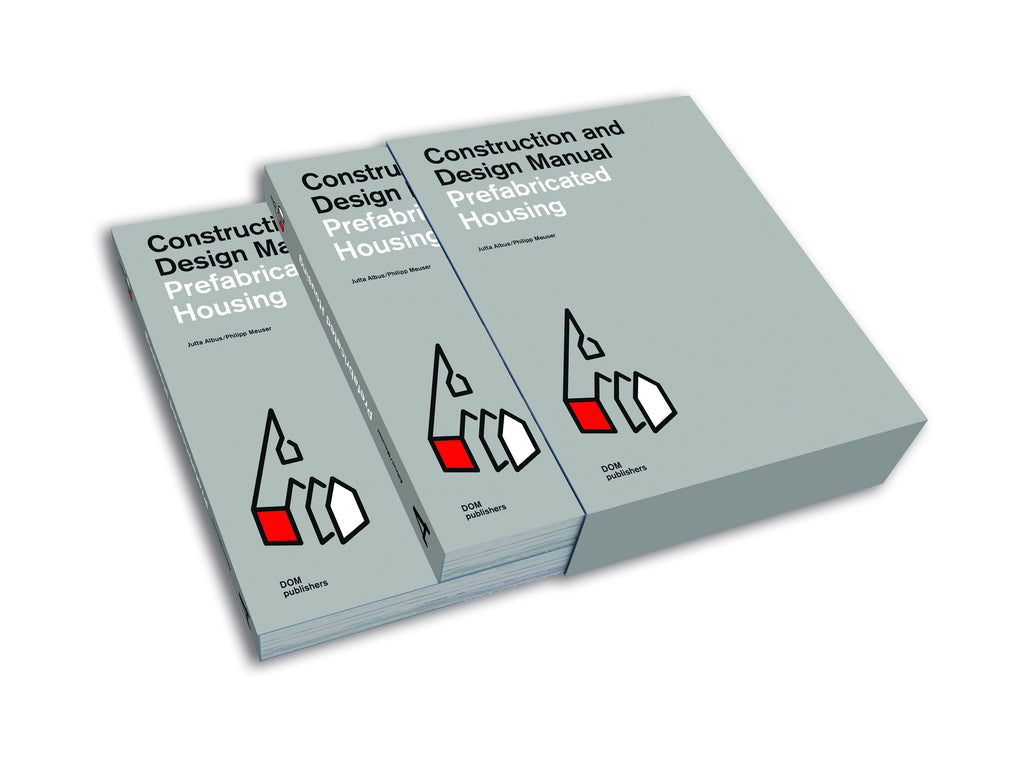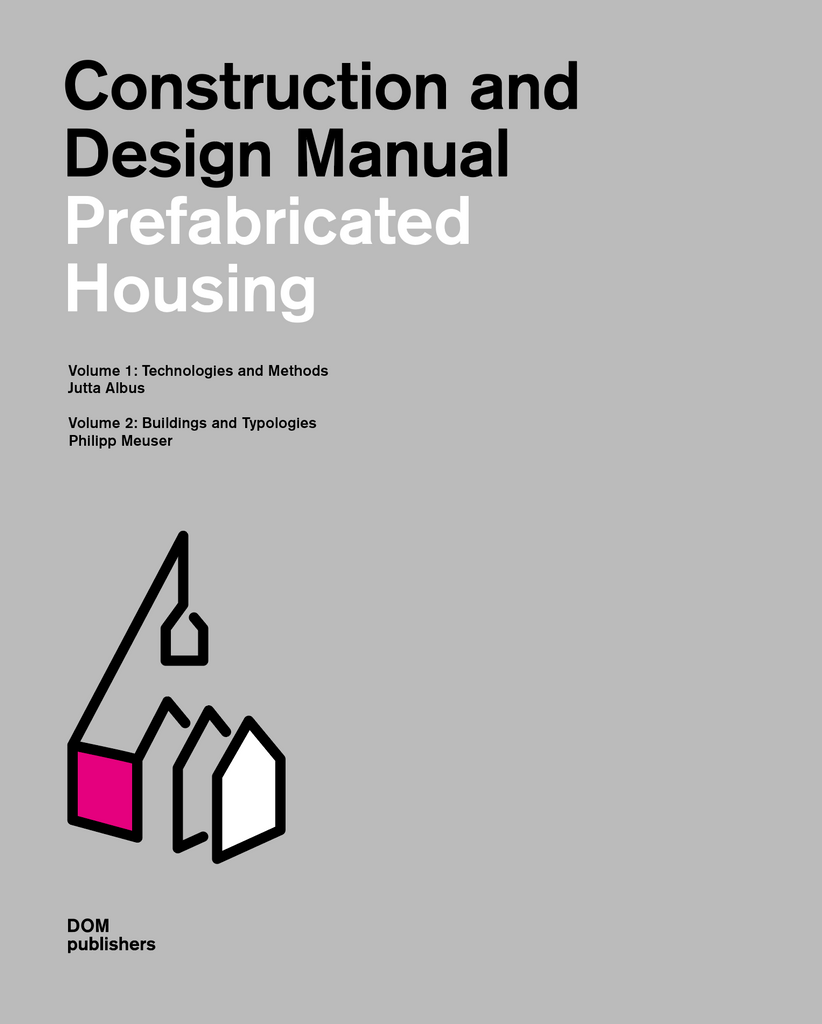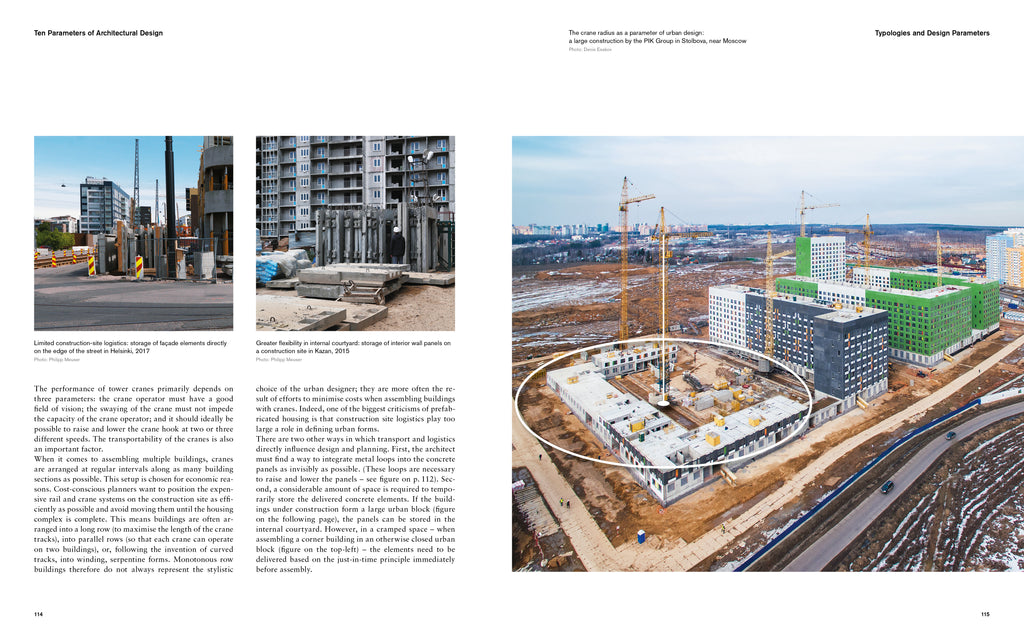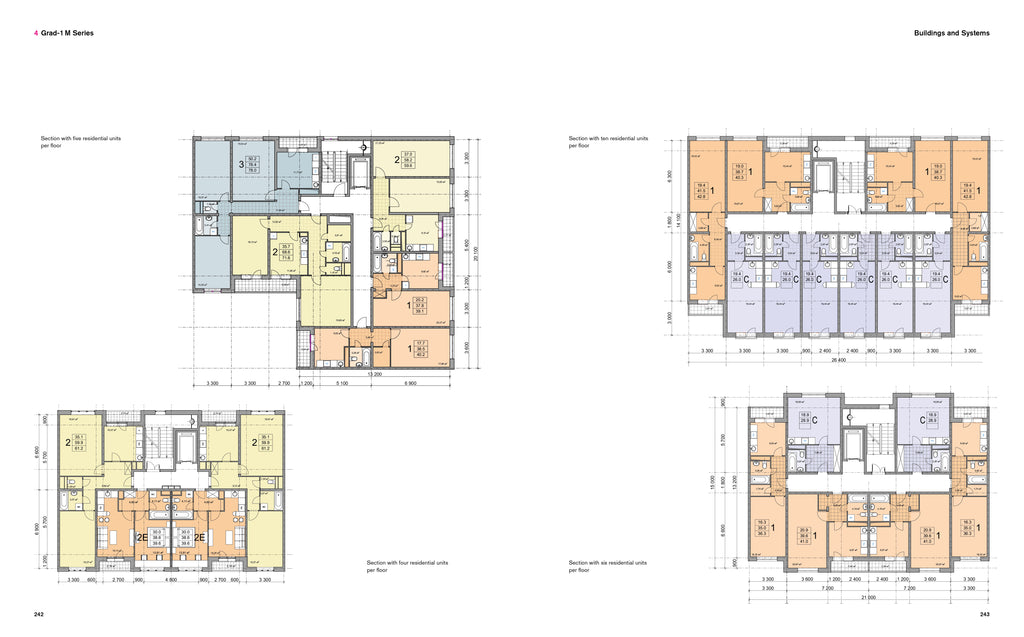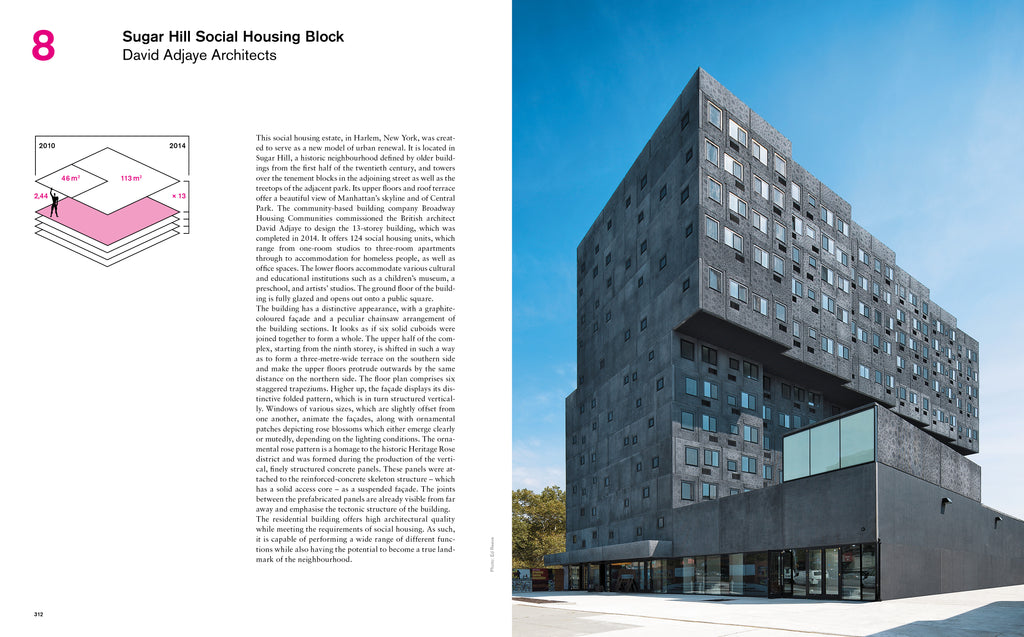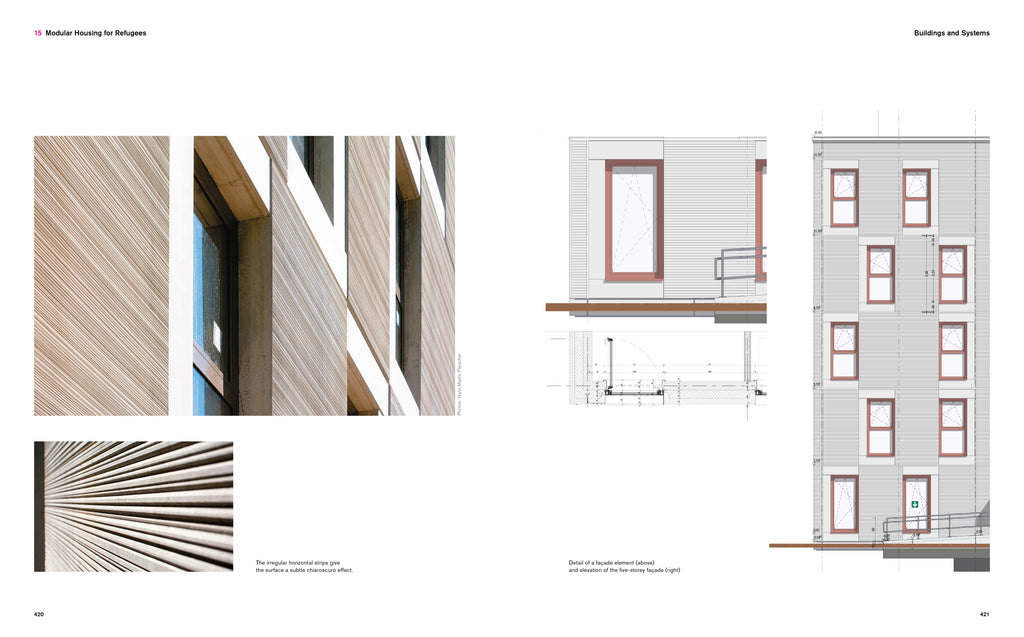Prefabricated Housing
€ 98.00
incl. MwSt., excl. shipping costsConstruction and Design Manual
Jutta Albus / Philipp Meuser
Prefabricated housing, often associated with blighted urban landscapes and monotonous grey boxes, has evolved into an approach to housing with a wealth of aesthetic and structural possibilities. Modern methods of constructing and assembling prefab buildings with large panels – methods that date back to the 19th century – are experiencing a renaissance. This is true across the world, from Vancouver and New York to London and Berlin through to Astana and Singapore. Moreover, prefabrication now also serves a wider range of purposes. In Moscow, Europe’s largest metropolitan area with 16 million people, it is primarily used as a means to provide affordable homes. But in certain developed countries, prefabrication is surprisingly also used to build exclusive, upmarket properties.
This construction and design manual presents a range of different production and assembly methods currently used in the field of prefabricated housing. The manual particularly focuses on efficiency, sustainability, and market relevance, and explores strategies for organising processes while presenting best-practice examples that reflect the latest trends. Furthermore, the manual investigates the potential of prefabricated housing on historical and architectural grounds as well as from a structural engineering standpoint. It puts forward ten design parameters for prefabricated housing and presents 15 noteworthy examples to make a fresh contribution to the debate on affordable housing today.
Vol. 1: Technologies and Methods
Vol. 2: Buildings and Typologies
225 × 280 mm
600 pages
950 images
2 volumes in slipcase
ISBN 978-3-86922-427-5

